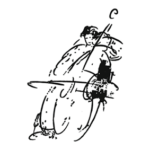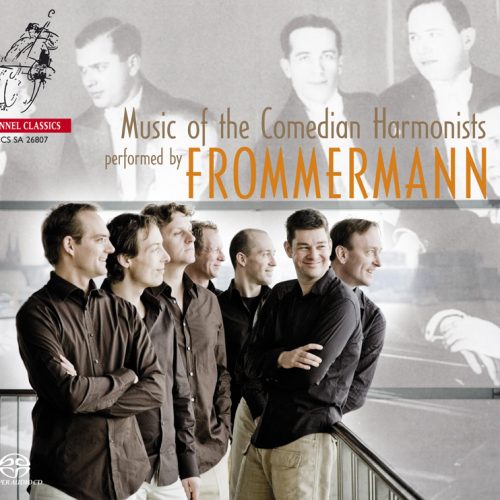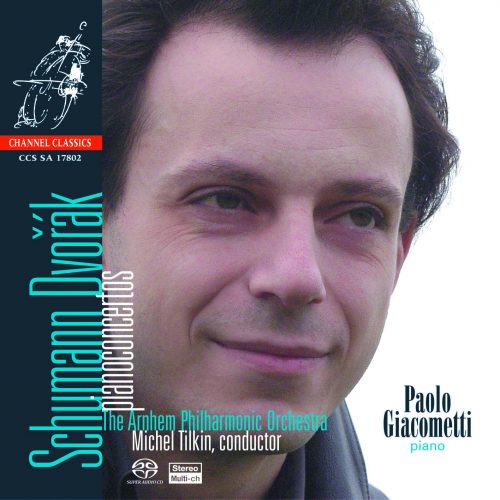
Fugue and the art of counterpoint are often almost bywords for Bach the composer. Certainly, from the viewpoint of many later generations, he was the first composer to make fugue the basis for a whole and complete piece of music, one that often seemed to serve no purpose beyond the ‘purely musical’. In a sense, this must surely be right: while there are countless fugal compositions before Bach, very few share the same relentless, yet expressive, cohesion, and most that were written outside the keyboard sphere were associated with a text and liturgical function. There is something about Bach’s fugal composition that immediately places it at the service of composers such as Mozart, Beethoven, Brahms and Schoenberg. For them, earlier counterpoint in the Renaissance tradition provided more a model for refined technique than for an overriding nexus of musically cohering ideas.
Tracklist
Please note that the below previews are loaded as 44.1 kHz / 16 bit.Total time: 01:10:16
Additional information
| Label | |
|---|---|
| SKU | 38316 |
| Qualities | DSD 256 fs, DSD 128 fs, DSD 64 fs, DXD 24 Bit, FLAC 192 kHz, FLAC 96 kHz |
| Channels | 2ch Stereo, 5 Channel Surround Sound, 2ch Stereo & 5ch Surround |
| Artists | |
| Composers | |
| Genres | |
| Editing Software | Pyramix |
| Original Recording Format | |
| Cables | van den Hul |
| Digital Converters | Merging Hapi |
| Mastering Room | Grimm LS1 |
| Mastering Engineer | The recording was originally digitized using the Grimm AD1, which operates at DSD64. The original session tracks were edited and rebalanced (which meant going through the mixer) in the only available format for that purpose; the Pyramix 352.8KHz/24bit PCM (DXD). Prior to the advent of direct digital delivery, the next step in the production process from 352.8KHz/24bit PCM would be the DSD64 edited master for SACD production. What we have done now is also make a direct conversion to DSD128 and DSD256 from that original DXD edited master, without going through any interim processing steps. Those DXD to DSD conversions are not up-samplings, as they would be going from one PCM sampling rate to another, for they are different encoding systems. PCM is a digital value sample based system, and DSD is a digital bit density modulated system. Conversion from any PCM sample rate to any DSD bit rate system is a remodulation, not an up-sampling. We feel there is an audio advantage to this process in using the original files so we give you the choice and you can decide. Jared Sacks |
| Microphones | Bruel & Kyaer, Schops |
| Mixing Board | Rens Heijnis custom made |
| Producer | Jonathan Freeman Attwood |
| Recording Engineer | Jared Sacks |
| Recording location | St. Johns Church, London |
| Recording Software | Merging |
| Recording Type & Bit Rate | DSD256 |
| Awards | |
| Instruments | |
| Release Date | September 23, 2016 |
Press reviews
Positive Feedback
There is a rather disciplined freedom to the music playing of this ensemble. No one is “the lead”. All are equal even as one and then another take the theme, as others provide counterpoint. It truly is a web they weave of ego-free music making—intensely sensitive, finely nuanced phrasing, flexible variations of tempo and of dynamics, full of warmth and life. (…)
Early Music
(…) The order seems wholly logical, and the importance of this recording is greatly enhanced by a splendid essay by John Butt on the compositional techniques that are demonstrated in this extraordinary compendium of canonic and fugal writing Bach drew together as Die Kunst der Fuge. (…) remarkable display of heartfelt musicianship. (…)
Het Parool
(…) Bachs muziek wordt hier op een voorname en zeer prettige wijze met rust gelaten.
AMADEUS
(…) Rachel Podger adotta questo organico, restituendoci a tutto tondo un capolavoro che non nisce mai di stupirci se affrontato con motivazioni espressive392 e intenzioni interpretative dove rigore, lologia e sensibilità artistica si intrecciano con naturalezza.
Opus HD (Opus d’Or)
The result is fascinatingly natural in a flowering of instrumental tones that is rarely heard. Thanks notably to a DSD sound recording that is close to perfection wherein the music is the center, this eternal music is rendered even more vivacious by Rachel Podger’s playing, which is both subtle and refined. Once again, this is great Art.
Toccata (CD Tipp)
(…) Rachel Podger hat uns, die Hörer, sofort im Gripp, spielt mit uns und führt uns mit dieser “akademischen Vorlage” die wahre Größe und Schönheit Bachscher Komposition vor Augen. (…)
Klassieke Zaken (Aangenaam Klassiek)
Een samenspel waar de vreugde van afspat. En dat levert een Kunst der Fuge op om heel blij van te worden.
The Guardian
(…) this new realisation is at the purist end – just four string players with the occasional (and often inaudible) harpsichord. No case is made in the notes for this approach, yet with playing of this sophistication, the restricted sound palette works wonderfully, supporting a calm, ruminative exploration of the many fugal devices. (…)
Positive Feedback
Podger is not going for monumental but rather the kind of pleasure to be found in following individual instruments with their identifiable textures creating lines weaving in and about each other building the fugue. With Bach this pleasure can grow into something else if we give it a chance, as Butt [the liner notes are written by John Butt], suggests. If you’re a Podger fan—and who isn’t?—go for it.
Opus Klassiek
Het is wonderlijk hoe harmonieus de muzikale abstractie van Bachs laatste werk zich in deze uitvoering vertaalt naar en verhoudt tot de expressieve exploratie van Podger en Brecon Baroque. (…)Wat eveneens een belangrijke rol speelt is de opnamekwaliteit, want die geeft ons wel of niet voldoende toegang tot dit grote werk. Channel Classics heeft een strikt heldere maar gelukkig tevens warme opname afgeleverd. De nagalm is precies goed. Kortom, we mogen ons met deze nieuwe uitgave zonder restrictie gelukkig prijzen.
Classics Today
The sound is stunning, reminiscent of the early days of digital recording, when listeners used to marvel at how realistic the sound was. Channel Classics has been doing this forever; we just may have forgotten how special it is when it’s done right. (…) The choice of instrumentation here makes perfect sense, the delineation of lines, the clarity of texture, and even the expressive aspects of each player’s performance defines an approach to the work that is at once practical and musically captivating.
HRAudio.net
Rachel Podger and her colleagues are justly celebrated as exceptional artists in the period performance field and they deliver wonderfully expressive performances of each of the eighteen fugues and canons that make up Bach’s astonishing work with a technical finesse that is beyond reproach. (…) Scholarly and thought provoking notes by John Butt complete a most desirable issue.
HRAudio.Net
“For her latest release on Channel Classics, Rachel Podger turns to Bach’s late masterpiece ‘The Art of Fugue’. She is joined in this enterprise by the four key members of her expert period ensemble Brecon Baroque: the violinist Johannes Pramsohler (who also plays second viola), Jane Rogers (viola), Allison McGillivray (cello) and Marcin ?wi?tkiewicz (harpsichord).
Rachel Podger and her colleagues are justly celebrated as exceptional artists in the period performance field and they deliver wonderfully expressive performances of each of the eighteen fugues and canons that make up Bach’s astonishing work with a technical finesse that is beyond reproach. The varied combinations of string instruments used here add spice and variety to each of the pieces. There is a rich mellownness to the string sounds and throughout the players ensure that every line is clearly defined so one can follow even the most complex strands with ease. Special praise is due to Marcin ?wi?tkiewicz for the fluent and thoughtful playing of his two alloted solos, the Canon alla Duodecima (tr.13) and Canon alla Decima (tr.15). The final fugue (Contrapunctus14) is performed unfinished, as Bach left it, a poignant reminder of the transience of life.
It need hardly be stated that Jared Sacks’s multi-channel DSD recording is, as always, state-of-the-art, capturing the warm acoustic of London’s Church of Saint Jude-on-the- Hill to perfection and giving the instruments an almost holographic vividness set within a realistic sound stage.
Performance and Multichannel Sonic Quality: 5 of 5 Stars”
Only logged in customers who have purchased this product may leave a review.





Reviews
There are no reviews yet.